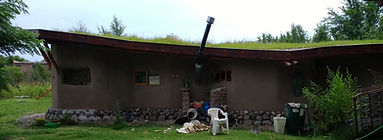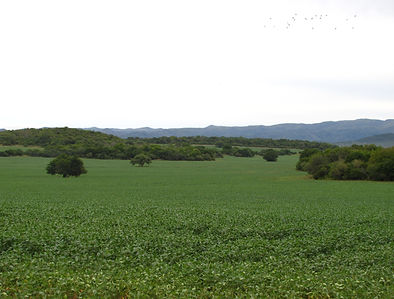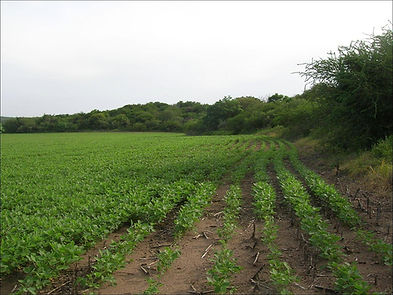
PROJECTS
Here you can find a description of my main current and past projects


Predicting predator activity in crop fields based on species-level information of floral resource distribution
Floral resources are consumed by many natural enemies of pests and can increase their longevity, fertility, and efectiveness. Therefore, the specific spatio-temporal distribution of specific resources can be a key driver of predator abundance and biological control levels.
In this project, together with Martin Entling (University of Koblenz-Landau) and Felix Bianchi (Wageningen University), we are investigating the green lacewing Chrysoperla carnea (Neuroptera, Chrysopidae), an important predator of aphids and other arthropods in agricultural fields that need to consume nectar and pollen as adults. Using dynamic resource maps of the landscape-scale distribution of the floral resources consumed by lacewing adults, we are estimating the dispersal distances of C. carnea adults between natural and cultivated habitats using the pollen they consume as a natural marker. Furthermore, we are developing spatially-explicit models to evaluate the mechanisms behind lacewing distribution in agricultural landscapes. The results of the project will help understanding the movement ecology of a relevant species and, by integrating modelling and empirical data, will generate important new insights for developing ecologically based management strategies to strengthen the ecosystem service of biocontrol.
Arthropod and ecosystem service distribution in arable fields and natural habitats: the role of ephemeral habitats
Non-crop habitats are essential for biodiversity conservation and ecosystem service provision in agricultural landscapes, but they are also highly diverse and temporarily unstable. In June 2018 I joined Michal Knapp at the Insect Ecology Team (Czech University of Life-Sciencies Prague) to do research on insect communities in Czech agricultural landscapes.
I joined their GACR project to study the role of field defects (temporary non-crop patches that grow in parts of fields where the crop can´t develop correctly) for several arthropods and the ecosystem services of pest and weed seed predation. We also investigated grassy and woody island patches as overwintering habitats for ground-dwelling arthropods and temporal trends on pest predation measured weekly with artificial prey throughout an full growing season.
At CULS, I found a great group of persons and some have become good friends. This, together with the beauty of Prague, one of my favortie cities in the world, have made this an unforgettable experience. Part of the earlier work on pest predation was done in collaboration with my friend Dr. Marco Ferrante, who introduced me to Michal and taught me the artificial prey method.





Green roofs as novel ecosystems to support insect communities in urban environments
In 2017, my colleague and urban ecologist from Córdoba, Dr. Silvina Fenoglio (IMBIV, Conicet and Universidad Nacional de Córdoba) invited me to join to a new project focused on green roofs, insect communities and ecosystem functionality. Along with her, Adriana Salvo and two talented and active students working on their thesis (Virginia Sanchez Domínguez and Diego Fabián), we sampled insects on 30 green roofs located in a gradient of urbanization, and we also compared 15 of those roofs with their neighboring gardens.
We found that green roofs support and huge diversity of insects from different feeding guilds and that roof area, landscape-scale amount of green habitats and plant communities are the main drivers of these communities. The results on insects are already published and we are working on two papers looking into the spontaneous plants that colonized these roofs.
Besides giving me the chance of doing research on my own house (one of the roofs and gardens are mine), this project connected me with the exciting topic of urban ecology and I thank Silvi for that! Recently, we published a review on the mechanisms behind the main drivers of insect extinctions on urban environments together with Ana Calviño, Adri Salvo and Martin Videla (Fenoglio et al., Ecological Entomology). I am also collaborating in Silvina´s National Geographic project on experimental green roofs focused on comparing native and exotic plants (https://www.nationalgeographic.org/find-explorers/maria-silvina-fenoglio).
Insects in the Chaco Serrano forest: fragmentation, spillover and ecosystem services
The Chaco forest is one the largest biomes in South America, but over the last decades a large proportion of its original cover was loss mainly due to agricultural expansion. During my Ph.D. and first postdoc in Córdoba (Argentina), I studied insect communities in fragmented Chaco Serrano forests along with my supervisors Graciela Valladares and Adriana Salvo and other colleagues.
We found that forest fragments support a high diversity of arthropods, although landscapes with low forest cover tend to have poorer communities. We also found that many species move intensively between the forest and adjacent crops and this spillover is generally positive for agriculture. Biological control of stink bug eggs and soybean yield increased in the presence of forest, whereas herbivory by insects decreased.
In the future, I plan to continue working on this system, looking for the best ways to integrate biodiversity conservation and agricultural production.

